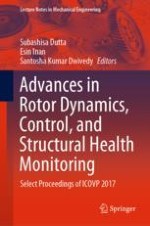This book consists of selected and peer-reviewed papers presented at the 13th International Conference on Vibration Problems (ICOVP 2017). The topics covered in this book are broadly related to the fields of structural health monitoring, vibration control and rotor dynamics. In the structural health monitoring section studies on nonlinear dynamic analysis, damage identification, viscoelastic model of concrete, and seismic damage assessment are thoroughly discussed with analytical and numerical techniques. The vibration control part includes topics such as multi-storeyed stacked tuned mass dampers, vibration isolation with elastomeric mounts, and nonlinear active vibration absorber. This book will be useful for beginners, researchers and professionals interested in the field of vibration control, structural health monitoring and rotor dynamics.
